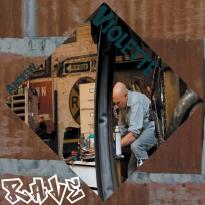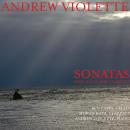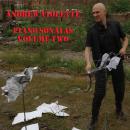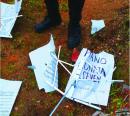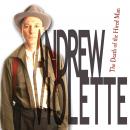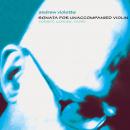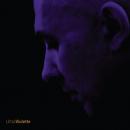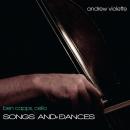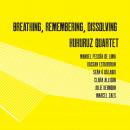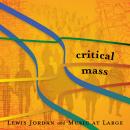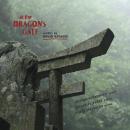Rave
Rave
Brooklyn, NY
| Violette: RaveiTunes Artist's PageiTunes Album Page | |||
|---|---|---|---|
| Song Title | Time | Price | |
| 1. | Intro, Messiaen and the Sitar | 04:23 | $0.99 |
| 2. | Chorale In Tremolos | 00:47 | $0.99 |
| 3. | The Russian Section | 02:40 | $0.99 |
| 4. | Movie Horns and Trill Soup | 04:10 | $0.99 |
| 5. | The Door to Hellfire | 00:47 | $0.99 |
| 6. | Heterophony | 02:39 | $0.99 |
| 7. | Hollywood | 03:44 | $0.99 |
| 8. | The Lost Puccini Aria | 01:20 | $0.99 |
| 9. | Contradance | 02:53 | $0.99 |
| 10. | Chaconne, Minimal Aria With Didgeridoo | 02:46 | $0.99 |
| 11. | Web of Colors | 00:49 | $0.99 |
| 12. | Colorfield In 22 Panels | 12:44 | |
| 13. | Beethoven's Fifth, Big Chords, Chordal Cascade, Tarantella | 07:17 | $0.99 |
| 14. | Contradance, Study On Country Dance, Martial Music | 03:28 | $0.99 |
| 15. | Double Stops | 08:14 | $0.99 |
| 16. | Study After Bach | 04:06 | $0.99 |
| 17. | A Burlesque and a Tarantella | 01:33 | $0.99 |
| 18. | A Waltz With Ostinato | 03:53 | $0.99 |
| 19. | Dueling Chopin Etudes | 02:36 | $0.99 |
| 20. | Russian Recap | 01:14 | $0.99 |
| 21. | The Long Descent | 00:42 | $0.99 |
| 22. | Country/Martial Music, Coda | 02:15 | $0.99 |
What do you do after completing seven of the longest piano sonatas in history, songs that go well beyond four minutes, and an opera that runs longer than most marathons? How about creating a seamless collage of obsessive virtuosity running no less than 75 minutes without a pause? Good idea. Welcome to the mind of Andrew Violette.
There's a long history of fiendish keyboardist-composers; Violette is just another Buxtehude, Scarlatti, Chopin, Liszt, Scriabin, Cecil Taylor or Fredric Rzewski in that sense. But Violette goes farther, mixing electronics with acoustic chamber instruments (keyboards and two violins) and leaving no envelope unpushed. This is a Rave unlike the typical ones. Underneath, though, the impulses are the same: a hedonistic, Dionysian gallop, brimming with sensory overload and too much information for any organ to make sense of. Time alters. Colors shift. Then the crash (the second part of Rave was written after 9/11).
NEW MUSIC BOX
Equal parts Messiaen and prog rock, if you can imagine such a co-mingling, Violette's new sound world is simultaneously restless and strangely comforting.
by Frank J. Oteri
PARISTRANSATLANTIC.COM
A seamless collage of obsessive virtuosity running no less than 75 minutes without a pause" is how the Innova press release describes Rave (rather well), before comparing Andrew Violette (b.1953 in NYC) to Buxtehude, Scarlatti (which one, I wonder?), Chopin, Liszt, Skryabin, Cecil Taylor and Fred Rzewski (you might add Charles Valentin Alkan too, since he's also apparently penned seven of the longest piano sonatas in history). It's unashamedly diatonic, full of crashing octaves and daring trills but it's hard to figure out where it's heading to, if anywhere at all. Violette thickens the plot by covering his late Romantic Hamburg Steinway CD147 with several layers of humid electronic moss, courtesy a Yamaha S90ES – played, as is the piano, by the composer himself – and electric and acoustic violin. Track titles like "Intro, Messiaen and the Sitar", "The Lost Puccini Aria", and "Dueling Chopin Etudes" give you some idea of what to expect. The end result is like your favourite albums by Rachmaninov, Liszt, John Adams (thinking Grand Pianola Music), Conlon Nancarrow, Liberace, early Vangelis and maybe even Astor Piazzolla, all played at the same time. That title is perhaps significant: raves are secret pilgrimages to obscure locations best appreciated when you are, in the words of the bard, "sorted for E's and wizz". Is this the way they say the future's meant to feel? / Or just 20,000 people standing in a field. / And I don't quite understand just what this feeling is. / But that's okay 'cause we're all sorted out for E's and wizz. / And tell me when the spaceship lands / 'cause all this has just got to mean something. / In the middle of the night, it feels alright, but then tomorrow morning. / Oh then you come down.
by Dan Warburton
KATHODIK
Andrew Violette è un virtuoso del piano, uno di quelli seri. Un minimalista, un massimalista, uno che ha un'estrema visione romantica della vita, un torrente in piena. “Rave”, è stordente rovescio atmosferico, 75 minuti d'ininterrotta esecuzione, tastiere e due violini a tirar colpi forsennati verso il cielo. 22 sezioni che coprono uno spettro sonoro che dal prog interseca scorie barocche, si innerva di musica da camera ed induce in stralci d'estrazione maggiormente sperimentale. Un'ira di Dio in pratica. Intimorente; furente. Eppure, eppure strada facendo la torrenziale cascata di note che propone, qualche pezzo lo perde, la trance agonistica che mette in mostra, spesso si accartoccia su se stessa in un impeto d'assoluto che, se da un lato è la fonte originale al quale attinge tale espressione stritolante, d'altro canto risulta troppo protesa verso tal fine per non apparir (a tratti); piuttosto sovralimentata. Vortice mirabolante, senza dubbio (1); peccato che da queste parti preferiamo esser più modesti nel desinar quotidiano. Opera imprescindibile per stati evocativi di gloria perduta, è un grande, senza dubbio (2), ma l'universo al quale questo “Rave” pare avvicinarsi di più, è abitato da strane creature mutanti che si portano dietro stigmate riconducibili ai più pesanti anni settanta, quelli dei tour senza risparmio di mezzi, carovane di tir in viaggio, mega palchi e pubblico adorante, martellamento strumentale ed asciugamano bianco sul collo a fine esecuzione. Scarlatti, Chopin, Liszt, Cecil Taylor (un pelo), Rachmaninov, Vangelis, chi più ne ha più ne metta. Musica che si muove in antri umidi, tastiere come refoli di vento gelido; spazio esterno freddo spazio interno tendente al freddo. Un monolito, inesprimibilmente terrificante per me scimmia primitiva, ogni significato scivola sulla sua superficie; lascia tremanti di paura a guardar interrogativi il cielo stellato. Troverà estimatori infiniti in alcune galassie, in quella sporca e fetida da me frequentata; francamente no. Dategli un ascolto prima dell'apertura portafoglio. Vi ho avvertito. (metto su i Cramps, è una bella giornata; che cazzo ci faccio ancora in casa?)
by Marco Carcasi
AMERICAN RECORD GUIDE
Andrew Violette's Rave is startling in a pleasant way. The work is sometimes demanding of the listener, in that multiple layers of wildly variant material at the same time become exhausting to perceive, much less follow separately, as in "Colorfield in 22 Panels." Aptly titled, Rave is over an hour of constant sound, a wash f different references and quotations, verging on overwhelming or numbing from the onslaught of styles and crashing cascades of chords and scales, much of it in a fairly limited dynamic range (loud, banging, and sawing). Some of the more special moments involve trippy contrasts between the material of the acoustic and electric violins and surreal collisions of tuning.
by McCormick
